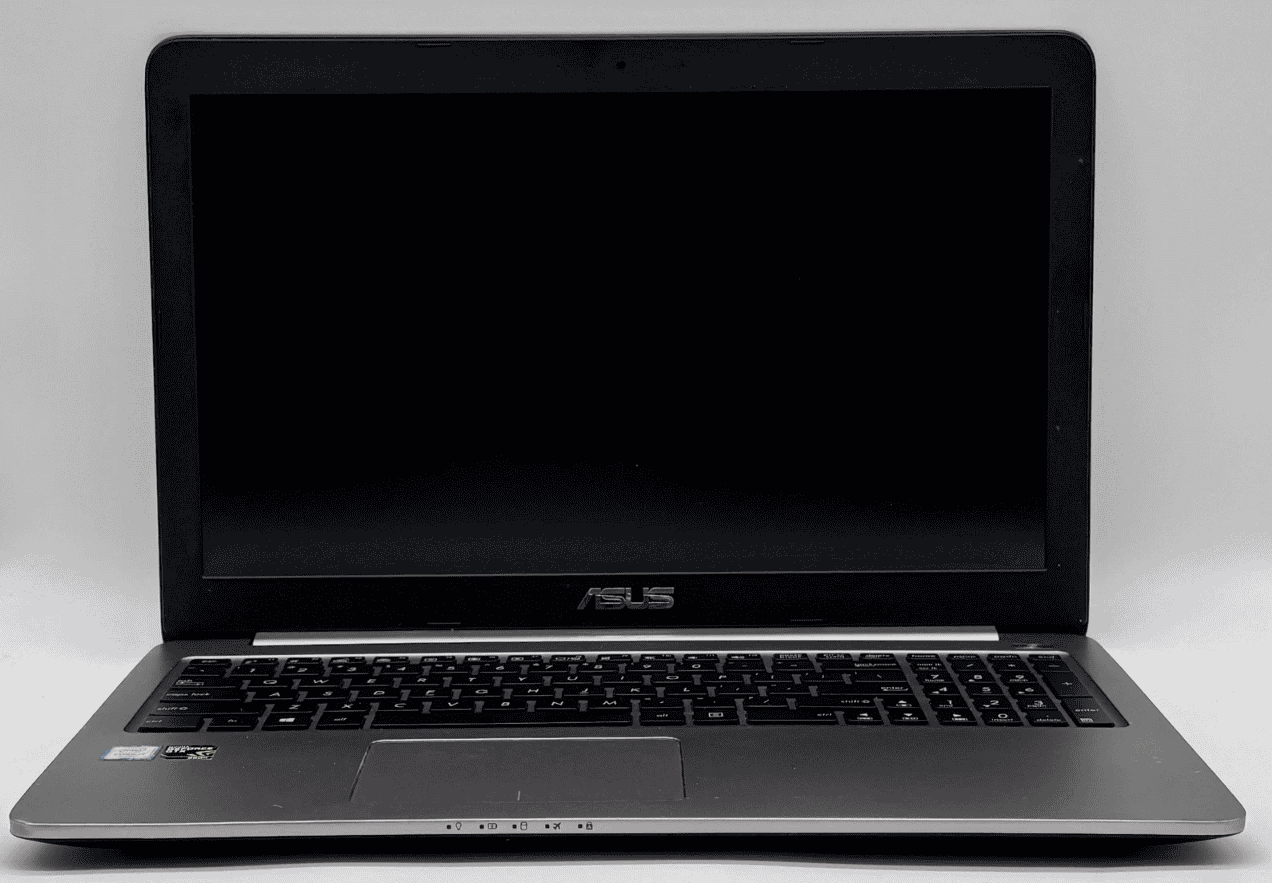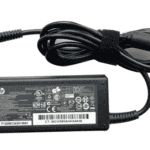Is your Asus laptop refusing to power on? This common problem can be frustrating but often has simple solutions. To fix an Asus laptop that won’t turn on, first try a power reset by unplugging the AC adapter, holding the power button for 30 seconds, reconnecting the adapter, and then attempting to power on the device. This basic troubleshooting step resolves many no-power issues by clearing residual electricity and resetting the internal power state.
If the power reset doesn’t work, check for basic power problems. Make sure your power outlet works by testing it with another device. Examine your laptop’s AC adapter and cord for damage. Sometimes the battery might be completely drained or failing, so try running the laptop with just the AC adapter connected.
For more stubborn cases, try a CMOS reset to restore hardware to default settings. Remove any peripherals like USB devices or external monitors that might interfere with the boot process. Look for any signs of life like LED indicators or fan noise, as these can help diagnose whether it’s a power issue or just a display problem.
How To Fix an ASUS Laptop That Won’t Turn On
If your ASUS laptop refuses to power up — no lights, no fan noise, no screen activity — it can be frustrating. But don’t worry. There are several potential fixes that can get your laptop running again. Follow these steps to diagnose and resolve the issue.
1. Perform a Hard Reset
A power reset clears any residual power and can fix a laptop that’s stuck in a non-responsive state.
- Disconnect the charger.
- If the battery is removable, take it out.
- Hold the power button for 30–60 seconds.
- Reconnect the battery and power adapter.
- Press the power button to turn on the laptop.
For laptops with built-in batteries, just press and hold the power button for 60 seconds, then try turning it on again.
2. Check the Power Adapter and Cable
- Ensure the power adapter is securely plugged into the wall and your laptop.
- Try a different wall outlet.
- Check for any frayed wires or damaged connectors.
- If you have access to another compatible charger, test with that to rule out a charger issue.
3. Inspect Power Indicator Lights
ASUS laptops often have LED indicators:
- No lights: Laptop may not be getting power. Try the steps above.
- Battery light blinking orange: Battery is critically low or failing.
- White light: Charging or fully charged.
If you’re not seeing any lights at all, even when plugged in, the issue may be with the charger or internal power circuit.
4. Disconnect All Peripherals
Sometimes external devices can interfere with startup.
- Unplug all USB devices, SD cards, external monitors, etc.
- Try booting the laptop with just the charger connected.
5. Try Connecting to an External Monitor
It’s possible the laptop is on but the screen isn’t working.
- Connect your laptop to an external monitor using HDMI or VGA.
- Power on the laptop.
- Use the Fn + F8 (or similar key combo) to switch displays.
If the external monitor shows your desktop, your internal display may be the problem.
6. Remove and Reseat RAM (Advanced)
If you’re comfortable opening your laptop:
- Remove the back panel (if possible).
- Take out the RAM modules and reinsert them firmly.
- Try booting again.
Loose or faulty RAM can cause startup failures.
7. Boot Into BIOS
If your laptop powers on but doesn’t boot, try entering the BIOS:
- Turn on the laptop and immediately press F2 repeatedly.
- If you get into BIOS, your hardware is working — the issue may be software-related.
8. Use ASUS USB Recovery or Installation Media
If the laptop turns on but won’t boot to Windows:
- Use a Windows installation USB or ASUS recovery disk.
- Boot from the USB (press Esc or F8 at startup for the boot menu).
- Choose to repair your computer or reinstall Windows.
9. Seek Professional Repair
If:
- The laptop shows no signs of life even after all steps
- You suspect motherboard or internal damage
- There’s a burning smell or unusual sounds
It’s time to take it to an authorized ASUS repair center or trusted technician.
By working through these steps, you can often get an unresponsive ASUS laptop to power back on — or at least pinpoint what’s wrong.
Key Takeaways
- Perform a power reset by holding the power button for 30 seconds with the AC adapter disconnected before trying to turn on your Asus laptop again.
- Check your power source, AC adapter, and battery connections to rule out simple power supply issues.
- If basic troubleshooting fails, try a CMOS reset or consult with ASUS support for possible hardware failures.
Initial Troubleshooting Steps
When your Asus laptop won’t turn on, several quick checks can help identify the problem before seeking professional help. These simple steps often fix common power issues without needing technical expertise.
Inspect AC Power Cord and Adapter
Start by checking your power supply components. Look for obvious damage on the power cord, such as fraying, cuts, or bent prongs. The adapter brick might show signs of overheating or damage.
Try wiggling the connections at both ends of the cord. Sometimes, a loose connection at the wall outlet or laptop port causes power failures.
Test the adapter by plugging it into a different outlet. Wall outlets can fail or circuit breakers might have tripped. The small LED light on many Asus adapters should glow when connected to working power.
If possible, borrow a compatible adapter from a friend to test your laptop. This helps determine if your adapter is the problem rather than the laptop itself.
Check the Power Button and Battery
Press and hold the power button for at least 15-30 seconds. This forces a complete shutdown and resets internal components. Release the button, wait 10 seconds, then try powering on normally.
If your Asus model has a removable battery, power off the laptop completely, remove the battery, and disconnect the power adapter. Hold the power button for 30 seconds to discharge remaining power. Reinsert the battery and try again.
For built-in batteries, try a power cycle. Disconnect the AC adapter, hold the power button for 30 seconds, reconnect power, and try turning it on.
Check for lights on your laptop when connected to power. Even if the screen remains black, indicator lights might show the laptop is receiving power.
Remove External Devices
External devices can sometimes interfere with the boot process. Disconnect everything from your Asus laptop except the power cord.
Remove USB drives, external hard drives, printers, and even your mouse and keyboard. Sometimes these peripherals can cause conflicts or power drain issues that prevent proper startup.
Memory cards in the SD slot should also be removed. After disconnecting everything, try powering on your laptop again.
If your laptop uses a docking station, try connecting the power adapter directly to the laptop instead. Docking stations can sometimes fail or develop connection issues that prevent power from reaching the laptop.
Advanced Power Checks
When basic troubleshooting fails to revive your Asus laptop, it’s time to try more technical approaches that address deeper power issues. These methods can often resolve problems that simple power cycling cannot fix.
Hard Reset the Laptop
A hard reset (also called an EC or RTC reset) can fix many stubborn power issues by clearing residual electrical charge from the system components. This process is more thorough than a regular restart.
To perform a hard reset:
- Disconnect the AC adapter and remove the battery (if possible)
- Press and hold the power button for 30-40 seconds
- Release the button and wait 5 minutes
- Reconnect the power supply and try turning on the laptop
This process discharges the capacitors on the motherboard and resets the embedded controller. If your laptop has a non-removable battery, simply unplug it, hold the power button for 30 seconds, then reconnect power and try again.
Test with an External Monitor
A black screen might not mean your laptop is completely dead – the display could be the only failing component.
Connect your Asus to an external monitor using the HDMI or DisplayPort. Listen carefully when pressing the power button – do you hear fans spinning or see any LED indicators? If the external monitor displays something while your laptop screen remains black, your system is working but has a screen issue.
Try pressing Fn + F7 or Fn + F8 (display toggle keys on most Asus laptops) to switch display outputs. You might also enter the BIOS by pressing F2 or Delete repeatedly during startup to check if it appears on the external monitor.
Power Cable and Motherboard Inspection
Physical damage to power components often causes no-power situations. Start with a visual inspection of your charging cable and adapter.
Look for:
- Frayed wires or bent connector pins
- Damage to the charging port on the laptop
- Swollen battery (a sign of battery failure)
If possible, test with a different compatible power adapter. On some Asus models, a small LED on the charging brick indicates proper function. No light means a faulty adapter.
For those comfortable opening their laptop, check for obvious motherboard issues like:
- Liquid damage (corrosion or residue)
- Blown capacitors (look for bulging or leaking components)
- Loose cable connections, especially between the power button and motherboard
System Diagnostics and Repairs
When your ASUS laptop won’t turn on, you can use several diagnostic tools and repair methods to identify and fix the problem. These approaches range from basic BIOS troubleshooting to using built-in Windows recovery options.
Accessing BIOS and Safe Mode
To access your ASUS laptop’s BIOS, press the ESC key immediately when powering on your device. A screen will appear with several options, including “System Diagnostics.” This tool lets you test various components to identify hardware issues.
You can also press F12 repeatedly during startup to enter the boot options menu. This gives you access to troubleshooting tools.
For Safe Mode access:
- Press and hold the Shift key while clicking Restart
- Select Troubleshoot > Advanced options > Startup Settings > Restart
- After your computer restarts, press F4 for Safe Mode
Safe Mode loads only essential drivers and services, which helps determine if software is causing your startup problem.
Update BIOS Settings
Outdated BIOS software can sometimes prevent your ASUS laptop from starting properly. To update your BIOS:
- Download the latest BIOS version from the official ASUS website
- Save it to a USB drive
- Restart your laptop and enter BIOS setup (usually by pressing F2 or Del)
- Navigate to the “Tools” or “Advanced” section
- Select the BIOS update option and follow the on-screen instructions
You can also reset BIOS to default settings by entering the BIOS menu and choosing “Load Default Settings” or a similar option. This can fix startup issues caused by incorrect BIOS configurations.
System Restore and Windows Recovery Environment
When Windows won’t start normally, the Windows Recovery Environment (WinRE) offers several repair options. To access WinRE on your ASUS laptop:
- Press the power button, then quickly press F12 several times
- Select “Troubleshoot” from the menu
From here, you can use System Restore to return your laptop to a working state:
- Choose “Advanced options” > “System Restore”
- Select a restore point from before your problems started
- Follow the prompts to complete the restoration
Other helpful WinRE tools include:
- Startup Repair: Automatically fixes common startup problems
- Command Prompt: For advanced troubleshooting
- System Image Recovery: Restores from a backup image
These tools can often resolve software-related startup issues without data loss.
Operating System Issues
Sometimes your Asus laptop won’t turn on because of problems with Windows or other software. These issues can prevent proper boot-up even when the hardware is working fine.
Boot from Bootable Media
When your Asus laptop won’t start normally, a bootable recovery drive can help diagnose and fix the problem. You’ll need to create a bootable USB drive using another working computer.
To make a bootable USB for Windows:
- Download the Windows Media Creation Tool from Microsoft’s website
- Run the tool and select “Create installation media”
- Choose USB flash drive option
- Follow the prompts to complete the process
Once you have the bootable media ready:
- Insert the USB drive into your non-working Asus laptop
- Restart the computer and press the boot key (usually F2, F8, F12, or Esc)
- Select your USB drive from the boot menu
- Choose “Repair your computer” option
- Select Troubleshoot > Advanced options
From here, you can run System Restore, Startup Repair, or Command Prompt to fix boot problems. These tools can repair corrupted system files that prevent normal startup.
Fast Startup and Display Settings
Fast Startup can sometimes cause boot problems on Asus laptops. This Windows feature saves system information to help your computer start faster, but it can create conflicts.
To disable Fast Startup after booting from recovery media:
- Open Control Panel from recovery options
- Go to Power Options > Choose what the power buttons do
- Click “Change settings that are currently unavailable”
- Uncheck “Turn on fast startup“
- Save changes
Display settings can also prevent your screen from showing anything during startup. If your laptop appears to be running (fans and lights working) but shows nothing on screen, try connecting an external monitor. This will help determine if the issue is with Windows display settings rather than hardware.
Reset Display Settings in BIOS Menu
Sometimes display problems happen before Windows even loads. In this case, resetting display settings through BIOS can help.
To access the BIOS menu on your Asus laptop:
- Turn off the computer completely
- Press and hold the power button for 30 seconds to discharge residual power
- Turn on the computer and immediately press F2 repeatedly (some models may use Del or Esc)
Once in BIOS:
- Navigate to the Advanced tab using arrow keys
- Look for Graphics Configuration or Display settings
- Set Primary Display to Auto or IGFX (integrated graphics)
- Save changes and exit (usually F10)
The BIOS menu also offers options to reset other system settings that might be causing boot problems. If you’ve recently changed hardware or BIOS settings before the issue started, try loading default settings using the “Load Optimized Defaults” option.
Recovering Your Data
If your Asus laptop won’t turn on, your important files may still be safe. There are several ways to access and save your data even when your device refuses to boot properly.
Use Data Recovery Tools
When your Asus laptop won’t boot, you can still recover your files with specialized tools. Start by removing the hard drive from your non-functioning laptop. You’ll need a screwdriver and should check your laptop’s manual for specific instructions.
Once removed, connect the drive to another working computer using a SATA-to-USB adapter. These adapters are inexpensive and available at most electronics stores.
For file recovery, try MiniTool Power Data Recovery. This software scans your drive and retrieves documents, photos, and other important files. The free version recovers up to 1GB of data, while paid versions offer unlimited recovery.
Other reliable options include Recuva and Stellar Data Recovery. These programs work with most file types and can recover data from formatted or damaged drives.
Contact Tech Support and JustAnswer
Professional help is sometimes necessary for complex data recovery situations. Asus technical support can guide you through basic troubleshooting steps to access your files. Contact them through their official website or customer service line.
For more specialized assistance, consider JustAnswer. This service connects you with certified tech experts who can provide personalized advice for your specific situation. They offer step-by-step guidance via chat or phone.
If your data is extremely valuable, professional data recovery services might be worth the investment. Companies like DriveSavers specialize in retrieving data from physically damaged drives. While expensive (often $300-$1,500), they can recover files from drives with severe damage.
Keep in mind that tech support might recommend sending your device to a repair center if they can’t help you recover the data remotely.
Addressing Possible Hardware Issues
When your ASUS laptop won’t power on, hardware problems are often the culprit. These issues can range from battery failures to motherboard problems that prevent your device from starting properly.
Identifying Hardware Failures
Start by checking your laptop’s power components. Disconnect the battery and power adapter, then hold the power button for 30 seconds to discharge any remaining electricity. This simple step often resolves minor power issues.
Look for physical damage signs. Check for liquid spills, broken ports, or a damaged power button. These can all prevent your ASUS laptop from turning on.
Test your power adapter with a voltmeter if possible, or try a known working adapter. A faulty adapter might not deliver enough power to start your laptop or charge the battery.
The CMOS battery might be failing, which can corrupt BIOS settings. This small battery maintains your system settings when powered off. If it’s depleted, your laptop might not start correctly.
Listen for beeps or look for light indicators. ASUS laptops often use these signals to communicate hardware problems.
Servicing Your ASUS Laptop
If basic troubleshooting fails, consider professional repair options. ASUS offers warranty service if your laptop is still covered. Check your warranty status on their website before proceeding.
For out-of-warranty devices, authorized service centers can diagnose and fix hardware issues. They have specialized tools to test components like the motherboard and RAM.
Some repairs are possible at home if you’re comfortable with electronics. Replacing the RAM or hard drive is relatively straightforward on most models. However, motherboard repairs typically require professional expertise.
Create a backup of your data before sending your laptop for repair if possible. If your laptop powers on even briefly, try to save important files to an external device.
Keep all original parts if you attempt DIY repairs, as you might need them later for warranty claims or if new parts don’t resolve the issue.
Frequently Asked Questions
ASUS laptop power issues can be frustrating but often have simple solutions. Most problems can be fixed with basic troubleshooting steps that don’t require technical expertise.
What should I do if my ASUS laptop won’t turn on or charge?
First, check your power connections. Make sure the power adapter is firmly plugged into both the wall outlet and your laptop.
Try a different wall outlet to rule out electrical problems. Sometimes outlets stop working without tripping breakers.
Remove the battery if possible, then hold the power button for 60 seconds. This drains residual power. Reconnect everything and try powering on again.
How can I reset an ASUS laptop that is unresponsive and does not power on?
Perform a hard reset by disconnecting all cables and removing the battery (if removable). Hold the power button for 30-60 seconds.
For non-removable batteries, disconnect the power adapter and hold the power button for 60 seconds to discharge static electricity.
As a last resort, perform a CMOS reset by following your laptop model’s specific instructions, usually involving a tiny button or jumper on the motherboard.
What are the steps to troubleshoot an ASUS laptop with no power lights indicating it is turning on?
Check the power adapter for damage. Look for frayed wires or bent connector pins. The adapter light should be on when plugged in.
Test with a known working adapter if possible. Faulty adapters are a common cause of power issues.
Try removing all external devices like USB drives, external monitors, and peripherals. Sometimes these can cause power distribution problems.
What methods are available to force start an ASUS laptop that has a black screen and won’t boot?
Try the power button reset. Unplug all cables, remove the battery if possible, then hold the power button for 30-60 seconds.
Connect just the power adapter (no battery) and try turning on the laptop. This bypasses potential battery issues.
Boot into BIOS by pressing F2 or Del during startup. If you can access BIOS, the hardware is working but there may be an operating system issue.
Is there a way to reboot an ASUS laptop when the screen remains black but the power light is on?
Force shutdown by holding the power button for 10-15 seconds. Wait 30 seconds before trying to restart.
Connect to an external monitor to determine if the problem is with your screen rather than the system itself.
Adjust screen brightness using function keys (usually Fn + F5/F6). Sometimes the screen is on but set to minimum brightness.
How do you restart an ASUS laptop that refuses to turn on under Windows 11?
Press and hold the power button for 15 seconds to completely shut down the laptop. Wait 30 seconds before attempting to restart.
Try the Windows 11 emergency restart: Press and hold the power button for 10 seconds, release, then press it again briefly.
Boot into Safe Mode by pressing F8 during startup. If successful, you can troubleshoot driver or software issues that might be preventing normal startup.







